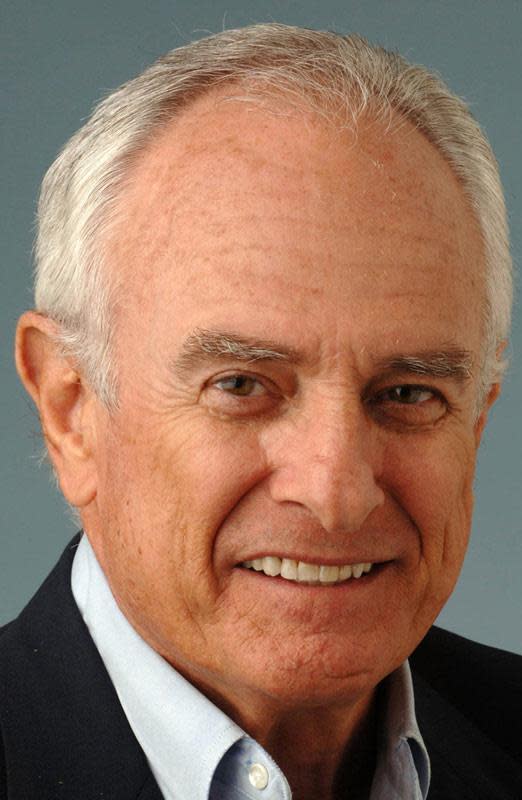The Georgia football legend who set several records the first time the Bulldogs faced TCU

- Oops!Something went wrong.Please try again later.
With the passing of time, signature moments of the past are often diminished and downgraded as inferior to the accomplishments that have become standard in today’s sports competition.
For sure, today’s athletes, benefitting from diet, training and other influences, are remarkable and extraordinary. And there are so many of them.
Football has become a fast-moving game. The speed of the game is amazing with players, as a group, becoming faster and faster. Three-hundred-pound linemen who may run 19 miles per hour (like former defensive lineman Jordan Davis) are as commonplace as SUVs on a freeway.

It has been three-quarters of a century since Frank Sinkwich set the Orange Bowl (all bowls as a matter of fact) total offensive record of 382 yards—139 yards rushing and 243 yards passing.
This was Georgia’s first bowl team, and Sinkwich played the season with a broken jaw, which was broken in the second game against South Carolina in Athens. The Bulldog training staff designed a protective mask which allowed Sinkwich to continue playing. He remained the starting tailback through the Orange Bowl in Miami.
In the season of 1941, Sinkwich set the SEC single season rushing record with 1,102 yards. His 713 passing yards for a total offensive mark of 1,816 was a new SEC record.
When the Orange Bowl was concluded, Sinkwich had set records in five categories: total offense, 372 yards; most TD passes, 3; most yards on TD plays run and pass, 179: most points, running and passing, 24 and most yards on TD passes, 136.
Bulldog coach, Wallace Butts, would later say that the first half of the ’42 Orange Bowl game was the greatest offensive performance of any of the teams he coached in Athens.
More on National Title Game:UGA football will turn to understudy Oscar Delp to continue what it has built at tight end
Cali Kid:Georgia football's Kendall Milton returns home to California hitting his stride
The opponent in that game was Georgia’s next opponent, TCU.
It was against the rules in those days to swap game films. Somebody on the staff, more than likely J.V. Sikes, who had Southwest Conference connections, came into possession of Horned Frogs game films. That enabled the staff to evaluate TCU’s triple wingback set, which was an unusual formation for the times.
According to the late Bill Hartman, the Georgia coaches viewed the TCU films “in guarded secrecy behind closed doors at night when all visitors and press reporters had retired from the scene.”
As it turned out, it probably did not make any difference. Sinkwich and the Georgia offense were so potent that afternoon that there is no telling what point production total might have come about.
The halftime score had Georgia ahead 33-7 and Butts began to substitute freely. The regulars were enjoying the Miami sun on the sideline in the second half. One of the colorful players on the team, lineman Harry Kunainsky, had filled his helmet with oranges while posing for a photo.
When TCU made its second touchdown in the second half to close the margin to 40-20, Butts yelled for the regulars to take the field. Kunainsky slammed on his helmet crushing a couple of oranges in the process. He took the field with orange juice dripping down his face.
It was a colorful moment for Georgia’s first bowl team which had brought much sense of pride in the little community of Athens. Coach Butts and the Sinkwich-led Bulldogs had gotten Georgia in the bowl business which had been the hue and cry for several years.
Dogs vs. Frogs:Kirby Smart emerges from TCU national title game prep to offer take on matchup, injuries
HARD:There's one word every Georgia D-lineman can define by heart. Here's how it unites them
The invitation had come about following the Georgia Tech game in Atlanta with the Bulldogs defeating Tech 21-0. Team headquarters for Georgia in Atlanta was the old Biltmore Hotel on West Peachtree Street.
Butts had a corner suite in the hotel and his closest friends would stop by.
Butts came in about 9 p.m. with the post-game party in full swing. He said softly, “We have just been invited to the Orange Bowl.” Pandemonium ensued. One observer said the reaction “lifted the roof.”
Some bolted the room to spread the news. Others got on the phone and became “town criers.” Calls went out all over the state. The chapel bell in Athens rang with its greatest fervor.
If Butts had decided to run for governor, he likely would have won in a landslide.
The best was yet to come. A year later, Georgia would be invited to play in the Rose Bowl. But the good times did not roll, unfortunately. After defeating UCLA 9-0 at Pasadena, everybody’s mind was tuned to events related to World War II.
One would think that had WWII not come along, it is possible that Butts, the passing game guru of that era, might have developed a dynasty that might have endured.
This article originally appeared on Athens Banner-Herald: UGA football legend Frank Sinkwich faced TCU in Orange Bowl

